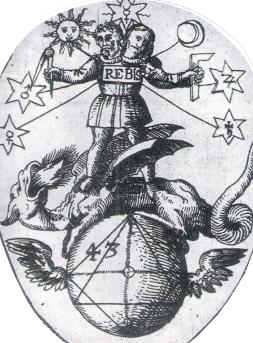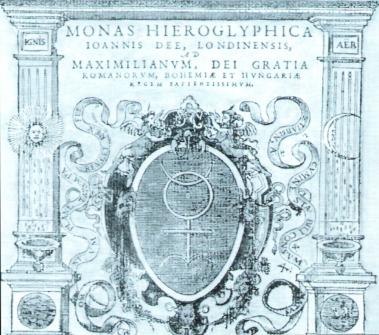By Eric Vandenbroeck and co-workers
Albert Pike And The Scottish Rite
Yesterday a monument
of Albert Pike was removed in Wahington D.C. The statue was erected by the Scottish
Rite of Freemasonry and depicted Pike on a granite pedestal, which features the
allegorical Goddess of Masonry, who holds the banner of the Scottish Rite. The
latter successfully lobbied Congress to grant them land for the statue as long
as Pike would be depicted in civilian, not military, clothing.
Pike’s body is
interred at the D.C. headquarters of the Scottish Rite of Freemasonry, which
also contains a small museum in his honor.
It is no secret that
Albert Pike's Scottish Rite today is the largest Masonic body in the world. Yet
although it claims its origins would go back to the unlikely King Frederick it
more factually received its inspiration from a French Rite of Perfection that
originated with Étienne Morin thus aptly named the "Morin effect" by
André Kervella.
In 1761, Etienne
Morin was appointed as "Grand Inspector to all parts of the New
World." He was sent forth to spread the degrees around. In 1763, Morin
formed a 25-degree Rite of Perfection in St. Domingo in the West Indies, and it
was from here that Scottish Rite Masonry truly began to spread around the
world. Four years later, Morin's friend Henry Francken
of Jamaica exported the degrees to New York, and in 1783 Isaac De Costa started
a Rite of Perfection in Charleston, South Carolina.
Of course, there are
also still discussions as to where and when John Mitchell and Joseph Cerneau received their 33rd degrees.
In the case of Cerneau, he is usually dismissed quickly due to the total
lack of evidence that anyone ever actually gave him the 33º. Emanuel de la
Motta, upon first meeting Cerneau, attempted to
obtain certain information about Cerneau's 33º
including having a look at his Patent but was unable to satisfy himself in any
way.1
But what of John
Mitchell? There has never been a Patent discovered showing that Mitchell
received the 33º from anyone. We know that Mitchell gave Dalcho
the 33º as a Patent for this event exists. Mitchell was the first Sovereign
Grand Commander of the SJ, so how did he receive the 33º? Who gave it to him?
Before Mitchell's role in the creation of the AASR, he was a Deputy Inspector
General (25º) of the so-called "Rite of Perfection." We often see
those senior to Mitchell in this system being credited with giving him the 33º
(usually Barend Spitzer). How could a 25º Mason from the "Rite of
Perfection" give the 33º of the AASR to someone? They are two different
systems and two separate degrees. Logic must come into play at some point. We
can also see an account of some "unknown" Prussian or German giving
him the degree with Mitchell signing an obligation for it in French.2 If
someone gave Mitchell the 33º, who gave it to him? Why didn't this unknown SGIG
play a role in the creation of the Charleston Council? Since this unknown SGIG
was senior to Mitchell, why wasn't he the first Charleston Sovereign Grand
Commander?
One suggestion is,
according to Henry Wilson Coil, and Albert Pike that a Deputy Inspector General
of the old so-called "Rite of Perfection" (as were both Mitchell and Cerneau) could "slide over" to the 32º of the new
33 degrees AASR. Also, if a 32º of the AASR was the senior (or only) 32º in an
unoccupied area, he could advance himself to (or assume) the 33º of the AASR to
give the degree to others and create a Supreme Council. Both Mitchell and Cerneau gave the 33º to others and created supreme
councils. Regardless of the historic disapproval of Cerneau,
it is possible that according to the custom of that time, he received the 33º
in the same manner as did Mitchell. And if so sound argument could be made that
he was just as legitimate an SGIG as was Mitchell.
A good question, of course, is also how did
Freemasonry start to begin with?
What we generally
know is that, although this is often claimed, Freemasonry most likely was not a
transition out of 'operative freemasonry'; and that the adjective' speculative'
generally referred to occult activity.
For example the
earliest English Masonic catechism, in answer to the question, "How high
is your Lodge?" gives the answer, "It reaches to the heavens".
The Lodge thus seemed to be an imaginative projection, 'conjured up' by its
members to embody a center of the universe.
Another example is
that one of the earliest known Freemasons Elias Ashmole, was an admirer of John
Dee, and Ashmole himself studied astrology and alchemy. That early on Masonic
iconography circulated in this kind of circles seems indicated by on the left
an alchemical drawing from Jamsthaler, Victorium spagyricum, 1625
clearly showing compass and square almost 100 years before Freemasonry would.
And on the right the famous two pillars as present in all Masonic lodges today,
however this time as the front cover of John Dee’s 1564; Monas Hieroglyphica.


While during the time
of Ashmole mentioned above, there were no degrees at all in Freemasonry. Also,
the third of the first three, was a late development. The first minute of the
working of the third degree comes not from a lodge but the minute book of the
Philo Musicae et Architecturae Societas Apoloni, the
Apollonian Society for the Lover of Music and Architecture. Or at best an
irregular lodge that, according to Albert G. Mackey, was formed in 1725,
meaning eight years before the official British first Grand Lodge in London in
1717.
In fact, following
the foundation of the Grand Lodge of England that has its origins in 1717 in
the course of time various Masonic bodies appeared many of whom did not
survive.
Tragically they never
took the opportunity to correct even the most obvious errors. The traditional
histories of the various branches of Freemasonry were never intended for public
consumption. Over approximately the last twenty years the traditional histories
of Freemasons have been re-interpreted, repackaged, and resold to, Freemasons.
But essential
elements of the modern myth that is evidenced in the Scottish Rite were created
when a nostalgic view of the chivalric codes of the Middle Ages was fashionable
and which culminated in not only physical displays of chivalry.
This is seen to have
started with an Oration Andrew Michael Ramsay gave in Paris in 1737, he German
Baron von Hund who helped create a large Masonic body, and German Baron von
Hund who helped create a large Masonic body the Rite of Strict Observance by claiming
to be in touch with unknown secret superiors. Whereby Von Hund carefully
covered his doubtful claims by avoiding answering questions, when he would
instead say that he had to keep it secret...
History and legend
concerning the historical Knights Templar also play an important role in the
degrees of the Ancient and Accepted Scottish Rite of Freemasonry, notably in
the Rite's 30th Degree, Knight Kadosh. Other Scottish Rite degrees sometimes
styled "Templar Degrees" include the 28th Degree (Knight Commander of
the Temple, formerly denominated the 27th Degree in the Southern Jurisdiction
of United States), the 29th Degree (Scottish Knight of Saint Andrew), the 32nd
Degree (Master of the Royal Secret), and the 33rd Degree (Inspector General).

The later Ancient and
Accepted Scottish Rite of Freemasonry then particularly captivated its members
by staging their fraternal ceremonies, moving portions of their ritual from the
lodge room floor to the elevated stage.
But while it
generally is claimed that the initial organization of the 33-degree AASR was
created in 1801 their history books have not proven any of this by their own
accounts.
It is clear however
that Albert Pike was elected an active member (Sovereign Grand Inspector
General) of Southern Jurisdiction on 20 March 1858.
Allegations of racism
have often been made about Pike over the years, yet he was a personal friend
of Thornton A. Jackson, Supreme Grand Commander of the Prince Hall Southern
Jurisdiction's Supreme Council. In fact, Pike presented Jackson with a complete
set of his rituals for use by the Prince Hall Scottish Rite.
Pike was a man of his
era. He spent years living in the South and was a Civil War general on the
Confederate side. He owned several household slaves in Little Rock, but he
personally disliked the institution of slavery. The separation of the races was
a way of life in the North and the South, and the concept of parallel groups
for blacks and whites was the accepted norm before and after the Civil War.
Pike had no interest in integrating Freemasonry, but he had no qualms about
sharing Masonic knowledge with black Masons.
Many anti-Masons have
attempted to connect Pike with the early days of the Ku Klux Klan. However,
there is no authentic evidence that Pike was involved with the KKK.
Anti-Masons have used
Pike’s writings in Morals and Dogma almost from the beginning as something with
which to beat Freemasons over the head, always plucking isolated passages from
it and selectively leaving out critical words and even whole sentences from
quotes. Whereby in general here Pike was again a child of his time he read and
quoted from what was available at the time, and just like I question about what
I above termed the King Frederick myth, one will also find many other myths in
the occult and Masonic literature of that time, not to mention even today.
1. See Charles S.
Lobingier, The Supreme Council 33º [Louisville, Kentucky: The Supreme Council,
33º, SJ., 1964], p. 102.
2. See Baynard,
History of the Supreme Council, 33º, Vol. 1, p. 89.
3. Coil's Masonic
Encyclopedia [New York: Macoy Pub. & Masonic Supply Co., 1961], p. 121 and
Pike, The Grand Constitutions of Freemasonry, p. 117.
For updates click homepage here